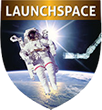Course Details
Course Summary
This course introduces the participants to a process beginning with an idea for a space flight mission, then a concept, then to the fundamental architecture, and finally to a conceptual system design. The course is divided into two broad topics, namely the mission definition phase and the mission design phase. The design process starts with a firm, stated need for the mission followed by a definition phase where objectives and requirements for each of the mission elements are performed. The process ends with a mission design and a final report.
Course Materials
Includes extensive notes and reference materials.
Who Should Attend
This course is intended for persons active in the field of space flight missions as engineers, managers, and support personnel. This introductory course will familiarize the attendees with the overall process of creating a space flight mission. Participants should have an understanding of basic concepts in engineering or physics college level mathematics will be used.
What You Will Learn
Design of space flight missions: the purpose and definition establishing the need and setting clear objectives. Requirements for each phase of the mission assumptions and constraints. Subsystems and their elements. Mission trade-offs and steps in selecting the final design. Content and organization of the final report.
Course Outline
- Needs Statement.
Why is this mission necessary? - Objectives of the mission.
- Requirements.
Orbits and trajectories, launch vehicles, flight instrumentation, ground segment, and lifetime of the mission. - Assumptions and Constraints.
Technological readiness, funding, physical and natural conditions. - Mission Design.
Space flight system concepts are created and analyzed. - Space Flight Segment.
A set of subsystem elements including structures, instruments, mechanisms, navigation and control, communications, propulsion, power, thermal, command and data handling. - Design Selection.
Mission trade-off studies and selection of the final design. - Final Report.
Design, organization and contents of the final report.
